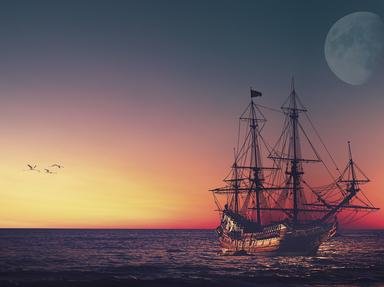Quiz Answer Key and Fun Facts
1. By the early 19th century, many societies of Britain and France offered fantastic financial rewards to the first European to return with corroborative reports of a fabled Saharan 'Golden City' known as:
2. Who was the first explorer to bring news to Europe from the great fabled city in West Africa at the cross-roads of key trans-Saharan trade-routes?
3. Which great river was discovered by Francisco de Orellana and later explored by Pedro Teixeira, Charles Marie de la Condamine, Alexander von Humboldt and Aime Bonpland?
4. Who were the opponents in the 1911 race to arrive first to the South Pole?
5. Who was the first European to lead an expedition that arrived at India via the rounding of the Cabo de Boa Esperanca (Cape of Good Hope) in 1497?
6. An easier one. The Apollo XI mission arrived on the Moon on July 20, 1969. We all know that the first man to take that small step was Neil Armstrong, touching the surface 39 seconds past 4:17 p.m., so I will ask about his fellow astronauts for that mission, who were:
7. When Marco Polo returned to Venezia (Venice) from the Silk Road and Cathay (China), he commanded a galley in a war against the rival city of Genova (Genoa). He was captured and spent a year in a prison where one of his fellow-prisoners was a writer of romances named Rustichello da Pisa, who prompted Marco to dictate to him the story of his travels, known sometimes as 'The Description of the World' but more commonly as 'Il M______'. Can you spell it?
8. Which European(s) had travelled to, and brought news from the Silk Road BEFORE Marco Polo, his father and his uncle?
9. The Spanish Conquistadores found and destroyed many ancient Inca cities in their insatiable search for gold. However, though they knew of this city's existence, they never discovered its whereabouts. The city was re-discovered by the American archaeologist Hiram Bingham in July, 1911:
10. On January 23, 1960, Swiss ocean explorer Jacques Piccard and U.S. Navy Lt.Don Walsh descended to the bottom of the Challenger Deep of the Marianas Trench (200 miles southwest of Guam), the deepest place on Earth, in a submersible named:
11. Back into space. Who was the first woman to become a cosmonaut?
12. One of the first explorers known is the Greek Pytheas of Massilia (Marseille). He navigated North along the European coasts, and reported having arrived at a distant shore. Since then, that name became synonymous with 'End of the World'.
13. As we have already seen, exploration can be a dangerous business. Which of these explorers did NOT die during his voyages?
14. Alvar Nunez Cabeza de Vaca, David Livingstone, Louis de Hennepin: What type of landmark did these explorers discover?
15. Which Viking navigator spent the winter in a country where wild grapes grew (he named it Vinland)?
16. The first expedition to circumnavigate the globe was initiated by Portuguese navigator Fernao de Magalhaes (Ferdinand Magellan). After his death, the voyage was completed by Sebastian Elcano, with only one ship and a small percentage of the more than 240 men that initiated the trip. The ship was the ____, with only ___ crewmen on board:
17. On which plane did great aviation pioneer Amelia Earhart and her navigator Fred Noonan disappear while attempting the first equatorial round-the-world flight?
18. From 1905 until the early '30s, pioneer speleologist Benjamin Franklin Einbigler performed a series of explorations of the world's largest known cave system, now known to have a length of more than 350 miles. Can you name this Kentucky's World Heritage Site?
19. There is an ancient Polynesian voyaging legend about King Hotu Matu'a coming from far away to become the founding father of a Pacific Ocean island which he named 'Te Pito Te Henua' (the Navel of the World). Can you name that island?
20. Last one about a non-human explorer. Which was the first man-made object to pass beyond the known limits of the solar system?
Source: Author
qazuhb
This quiz was reviewed by FunTrivia editor
gtho4 before going online.
Any errors found in FunTrivia content are routinely corrected through our feedback system.


